Summary
- Electrostatics
- Coulomb's law
- Electric field
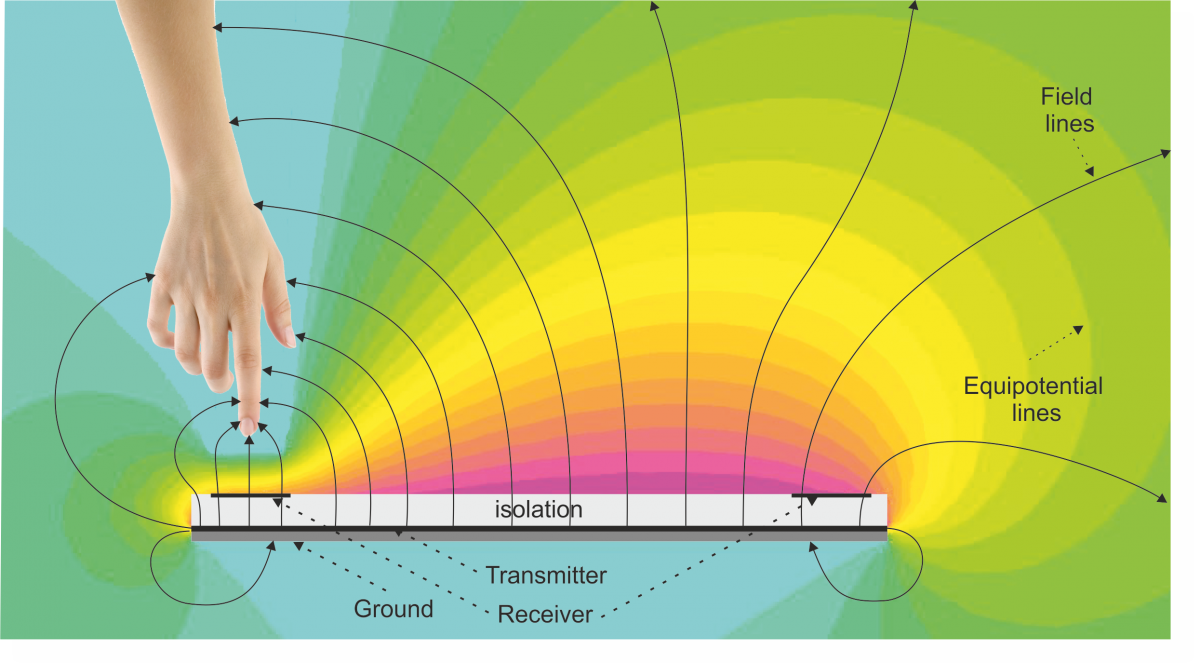
- Electric field
Chapter 20
- Electric potential energy
- Electric potential
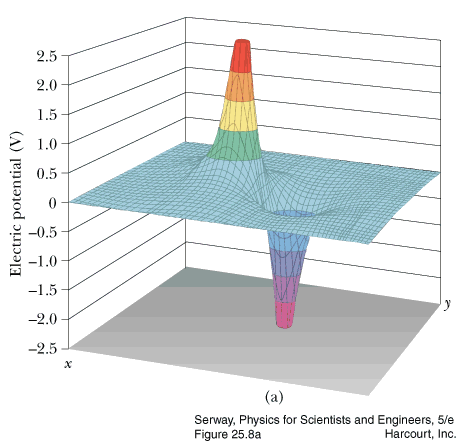
2-D fields and potential applet:
- Lecture learning outcomes
A student who masters the topics in this lecture will be able to:
- draw a representation of the electric field for a two-dimensional charge distribution
(using either vectors or lines of force)
- explain electric potential energy in terms of the work required to move a charge in an electric field
- use algebra to find the change in electric potential ΔV, the change in electric potential energy ΔU, or the charge q when any two of these quantities are given
- explain the decrease in the electric potential along the direction of the electric field and the constancy
of the electric potential along a direction perpendicular to the electric field
- use algebra to find the electric field E, the change in electric potential ΔV, or the displacement Δs when any two of these quantities are given
Practice:
Try these additional examples
Example #6
Example #7
Prepare:
Read textbook sections 20-2 through 20-6 before the next lecture
sb5 23.44
What field is required to stop electrons having energy 1.60×10−17 J in a distance of 10.0 cm?
A. 1.0 N/C
B. 10 N/C
C. 100 N/C
D. 1000 N/C
Answer
gc6 16.16mod
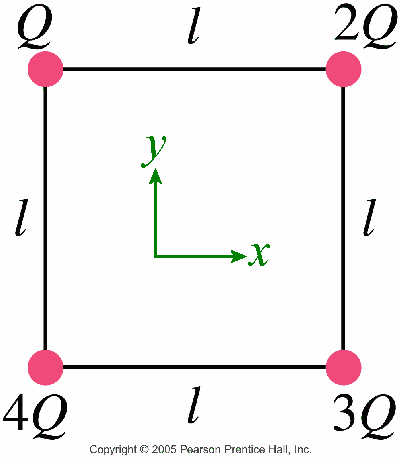 Calculate the electric field at Q using the figure if Q = 1 nC and l = 1 m.
Calculate the electric field at Q using the figure if Q = 1 nC and l = 1 m.
A. 53.2 N/C at 121°
B. 14.8 N/C at 68°
C. 105 N/C at 168°
D. 37.6 N/C at −31°
Answer
sb5 25.3
Calculate the speed of a proton accelerated from rest through 120 V.
A. 23.1 Gm/s
B. 6.49 Mm/s
C. 152 km/s
D. 120 m/s
Answer
sb5 25.10
Find the potential difference VB − VA for the configuration
of Fig. P25.10.
A. 455 V
B. 260 V
C. 325 V
D. −325 V
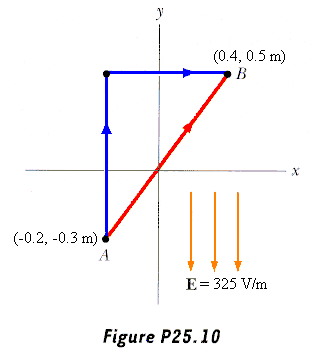 Answer
Answer
sb5 25.17
What is the electric potential at the origin for the charge configuration of Fig. P25.17?
A. 400 V
B. 800 V
C. 22.5 kV
D. 45.0 kV
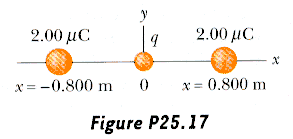 Answer
Answer
Walker5e EYU 19.5
The electric field lines for a system of two charges is shown below. Which of the following could be the
correct charges 1 and 2?
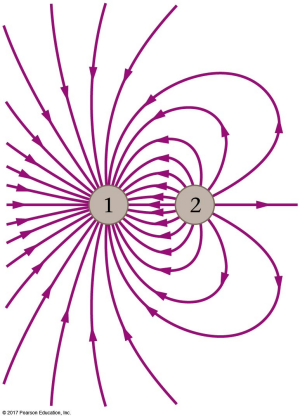
A. q1 = +32 µC, q2 = −16 µC
B. q1 = −32 µC, q2 = +16 µC
C. q1 = −16 µC, q2 = +32 µC
D. q1 = −16 µC, q2 = −32 µC
Answer
Walker5e EYU 20.1
The electric potential in system A changes uniformly by 1000 V over a distance of 10 m; in system B the
electric potential changes uniformly by 1 V over a distance of 1 cm. The magnitude of the electric field in
system A is _____ the magnitude of the electric field in system B.
A. greater than
B. less than
C. equal to
Answer
D. 1000 N/C

A. 53.2 N/C at 121° N
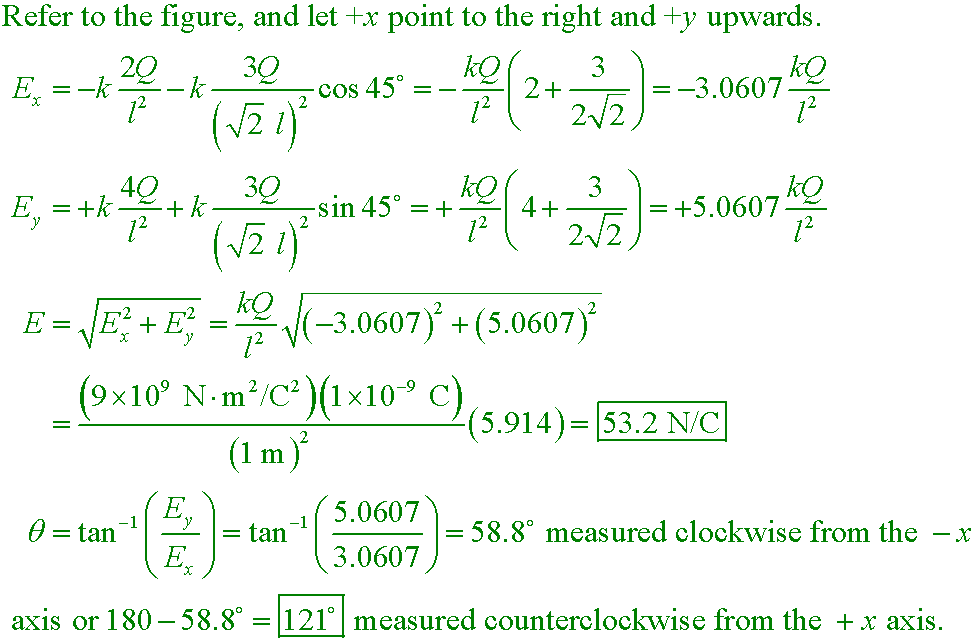
C. 152 km/s

B. 260 V

D. 45.0 kV

B. q1 = −32 µC, q2 = +16 µC

The electric field lines converge toward charge 1 and away from 2, which means
charge 1 is negative and charge 2 is positive. Because there are twice as many lines connected to charge 1 as there
are connected to charge 2, the magnitude of q1 must be twice the magnitude of q2.
C. equal to
The magnitude of the electric field is the ratio of the change in potential
ΔV to the displacement Δs. In this case, 1000 V divided by 10 m yields an electric
field of 100 V/m (or 100 N/C), the same as 1.0 V divided by 0.010 m.
Another way to think about it is to remember voltage is like elevation and field is like slope. Although 1000 V
represents an elevation change 1000 times bigger than 1.0 V, 10 m is 1000 times farther than 1 cm. Hence the slope
of the "terrain" is the same; it increases by 100 V each meter of displacement.



 Calculate the electric field at Q using the figure if Q = 1 nC and l = 1 m.
Calculate the electric field at Q using the figure if Q = 1 nC and l = 1 m. Answer
Answer
 Answer
Answer





